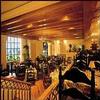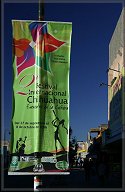Ciudad Juarez, Mexico History
History Museum
Avenida 16 de Septiembre #209
Built in 1885-89 this building served as the Customs House for many years and it now houses the city’s Historical Museum. It is one of the few examples of Victorian architecture left in Juarez and is characteristic of the Porfirio Diaz era (1876-1911). On October 16, 1909, Presidente Porfirio Diaz hosted a banquet for President William H. Taft in the central hall. This was the first meeting between presidents of the United States and Mexico
The building’s rooms and halls were lavishly decorated for the festivities of Mexico’s Independence Centenial in 1910. Only one year and a few months later on May 8, 1911, the pact for Porfirio Diaz’s resignation of the presidency of Mexico was reached here. After the great battle of Ciudad Juarez in May, 1911, the peace treaties giving victory to the Mexican Revolution, headed by Franciso I. Madero, were signed in this building. The legendary Pancho Villa, Pascual Orozco and many other heroic figures participated in the “siege” of the city. The Mexican Revolution lasted ten years and numerous interested American took an active part in the events.
Since the arrival of the railroad in the 1880’s, all the merchandise that crossed from one country to another and payment of taxes were controlled in the Customs House. For many years the railroad was the primary choice for transporting cargo. Mexican trains still cross the center of town at night to link up with the Union Pacific, Burlington Northern/Sante Fe railways in El Paso.
In 1990, the entire building was restored so that it could open its doors as the Ciudad Juarez Museum of History. This museum has a permanent exhibit of regional history starting with pre-Columbian cultures such as that which existed in the Casas Grandes and Paquime in the state of Chihuahua. It also covers the explorations by the Spanish Conquistadors, the period of the Spanish Vice-Royalty, Independence, the Reformation, and the Porfirio Diaz era. Finally, two halls are dedicated to the Mexican Revolution.
At present the museum is in the process of expanding its contents. More emphasis will be given to the daily life, customs, and culture of the border society which is characterized by migration, work, and a meeting of cultures.
(Author’s Note: The renovation has been completed now. See the JTG pages on the Museum of History.)




